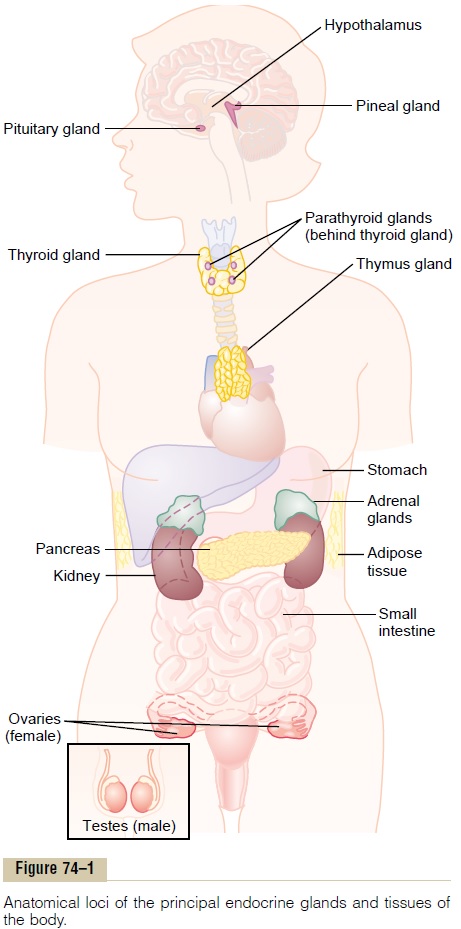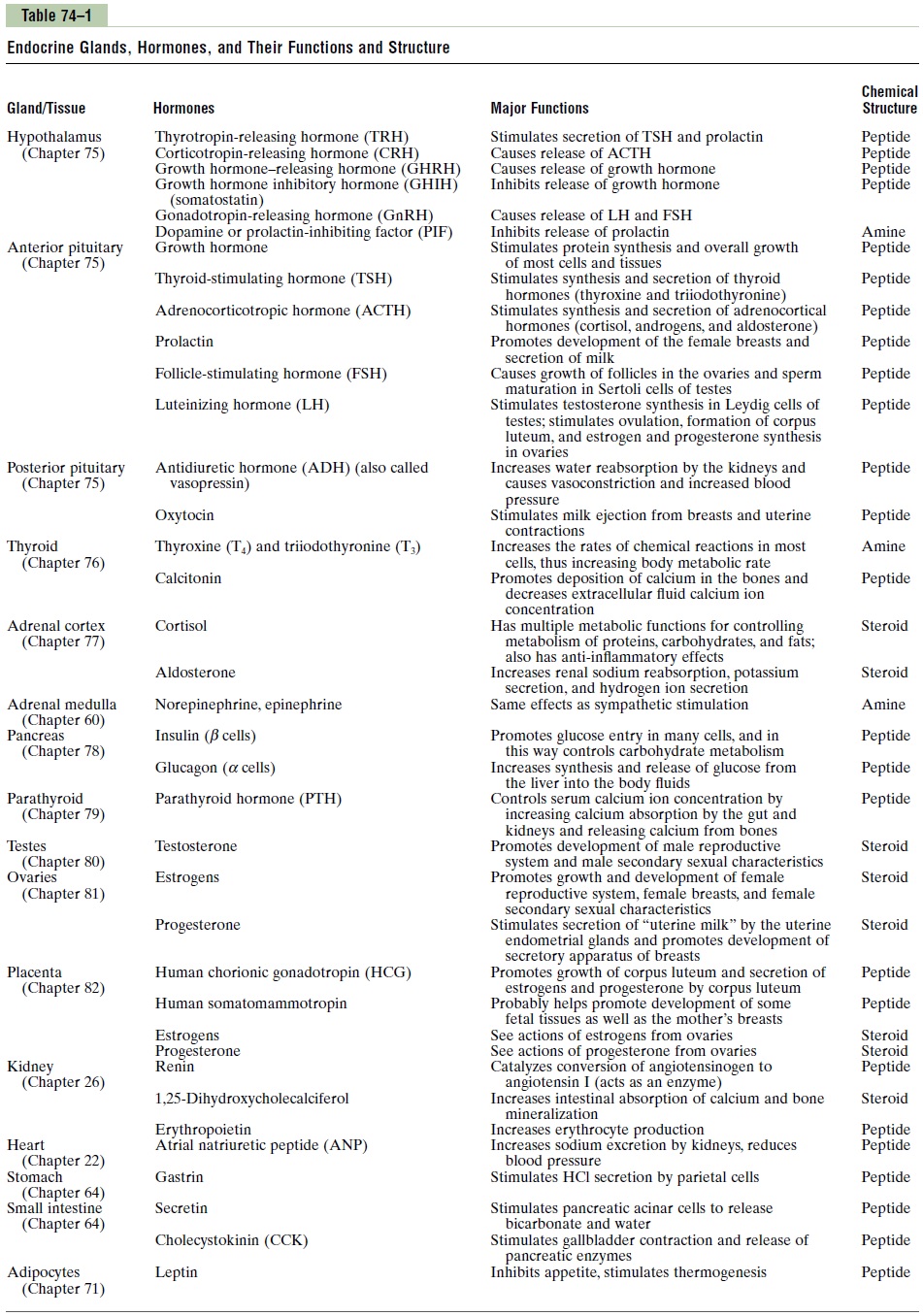Chapter: Medical Physiology: Introduction to Endocrinology
Coordination of Body Functions by Chemical Messengers
Coordination of Body Functions by Chemical Messengers
The multiple activities of the cells, tissues, and organs of the body are coordinated by the interplay of several types of chemical messenger systems:
1. Neurotransmitters are released by axon terminals of neurons into thesynaptic junctions and act locally to control nerve cell functions.
2. Endocrine hormones are released by glands or specialized cells into thecirculating blood and influence the function of cells at another location in the body.
3. Neuroendocrine hormones are secreted by neurons into the circulatingblood and influence the function of cells at another location in the body.
4. Paracrines are secreted by cells into the extracellular fluid and affectneighboring cells of a different type
5. Autocrines are secreted by cells into the extracellular fluid and affect thefunction of the same cells that produced them by binding to cell surface receptors.
6. Cytokines are peptides secreted by cells into the extracellular fluid and canfunction as autocrines, paracrines, or endocrine hormones. Examples of cytokines include the interleukins and other lymphokines that are secreted by helper cells and act on other cells of the immune system. Cytokine hormones (e.g., leptin) produced by adipocytes are sometimes called adipokines.
In the next, we discuss mainly the endocrine and neuroendocrine hormone systems, keeping in mind that many of the body’s chemical messen-ger systems interact with one another to maintain homeostasis. For example, the adrenal medullae and the pituitary gland secrete their hormones primarily in response to neural stimuli. The neuroendocrine cells, located in the hypo-thalamus, have axons that terminate in the posterior pituitary gland and median eminence and secrete several neurohormones, including antidiuretic hormone(ADH), oxytocin, and hypophysiotropic hormones, which control the secretionof anterior pituitary hormones.
The endocrine hormones are carried by the circulatory system to cells throughout the body, including the nervous system in some cases, where they bind with receptors and initiate many reactions. Some endocrine hormones affect many different types of cells of the body; for example, growth hormone (from the anterior pituitary gland) causes growth in most parts of the body, and thyroxine(from the thyroid gland) increases the rate of many chemical reac-tions in almost all the body’s cells.
Other hormones affect only specific target tissues, because only these tissues have receptors for the hormone. For example,adrenocorticotropic hormone(ACTH) from the anterior pituitary gland specifically stimulates the adrenalcortex, causing it to secrete adrenocortical hormones, and the ovarian hormones have specific effects on the female sex organs as well as on the secondary sexual characteristics of the female body.

Figure 74–1 shows the anatomical loci of the major endocrine glands and endocrine tissues of the body, except for the placenta, which is an additional source of the sex hormones. Table 74–1 provides an overview of the different hormone systems and their most important actions.

The multiple hormone systems play a key role in regulating almost all body functions, including metab-olism, growth and development, water and electrolyte balance, reproduction, and behavior. For instance, without growth hormone, a person would be a dwarf.
Without thyroxine and triiodothyronine from the thyroid gland, almost all the chemical reactions of the body would become sluggish, and the person would become sluggish as well. Without insulin from the pan-creas, the body’s cells could use little of the food car-bohydrates for energy. And without the sex hormones, sexual development and sexual functions would be absent.
Related Topics